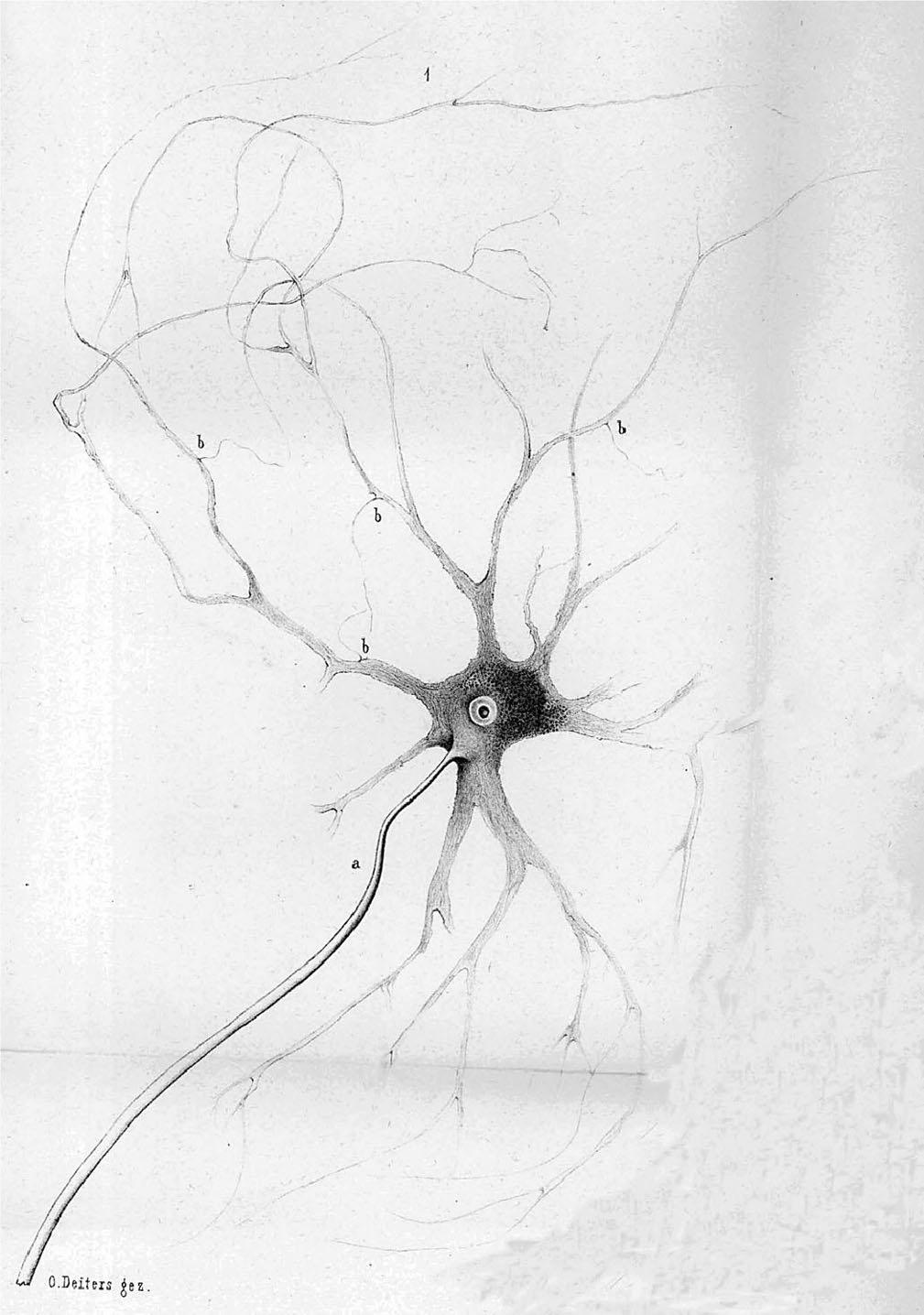Otto Deiters on:
[Wikipedia]
[Google]
[Amazon]
Otto Friedrich Karl Deiters (; 15 November 1834 – 5 December 1863) was a German  Deiters died in 1863 from
Deiters died in 1863 from
(archive.org)
/ref>
Neurophilosophy
Discovery of the Neuron
Britannica.com
article on Deiters' cell 1834 births 1863 deaths German anatomists University of Bonn alumni University of Bonn faculty Physicians from Bonn {{Germany-med-bio-stub
neuroanatomist
Neuroanatomy is the study of the structure and organization of the nervous system. In contrast to animals with radial symmetry, whose nervous system consists of a distributed network of cells, animals with bilateral symmetry have segregated, defi ...
. He was born in Bonn
The federal city of Bonn ( lat, Bonna) is a city on the banks of the Rhine in the German state of North Rhine-Westphalia, with a population of over 300,000. About south-southeast of Cologne, Bonn is in the southernmost part of the Rhine-Ru ...
, studied at the University of Bonn
The Rhenish Friedrich Wilhelm University of Bonn (german: Rheinische Friedrich-Wilhelms-Universität Bonn) is a public research university located in Bonn, North Rhine-Westphalia, Germany. It was founded in its present form as the ( en, Rhine ...
, and spent most of his professional career in Bonn
The federal city of Bonn ( lat, Bonna) is a city on the banks of the Rhine in the German state of North Rhine-Westphalia, with a population of over 300,000. About south-southeast of Cologne, Bonn is in the southernmost part of the Rhine-Ru ...
. He is remembered for his microscopic research of the brain
A brain is an organ (biology), organ that serves as the center of the nervous system in all vertebrate and most invertebrate animals. It is located in the head, usually close to the sensory organs for senses such as Visual perception, vision. I ...
and spinal cord
The spinal cord is a long, thin, tubular structure made up of nervous tissue, which extends from the medulla oblongata in the brainstem to the lumbar region of the vertebral column (backbone). The backbone encloses the central canal of the sp ...
.
His name is lent to the "nucleus of Deiters", also called the lateral vestibular nucleus, and to " Deiters' cells", structures that are associated with outer hair cell
Hair cells are the sensory receptors of both the auditory system and the vestibular system in the ears of all vertebrates, and in the lateral line organ of fishes. Through mechanotransduction, hair cells detect movement in their environment. ...
s in the cochlea
The cochlea is the part of the inner ear involved in hearing. It is a spiral-shaped cavity in the bony labyrinth, in humans making 2.75 turns around its axis, the modiolus. A core component of the cochlea is the Organ of Corti, the sensory o ...
of the inner ear
The inner ear (internal ear, auris interna) is the innermost part of the vertebrate ear. In vertebrates, the inner ear is mainly responsible for sound detection and balance. In mammals, it consists of the bony labyrinth, a hollow cavity in th ...
.
typhoid fever
Typhoid fever, also known as typhoid, is a disease caused by '' Salmonella'' serotype Typhi bacteria. Symptoms vary from mild to severe, and usually begin six to 30 days after exposure. Often there is a gradual onset of a high fever over severa ...
at the age of 29. Before he died, Deiters provided the most comprehensive description of a nerve cell
A neuron, neurone, or nerve cell is an electrically excitable cell that communicates with other cells via specialized connections called synapses. The neuron is the main component of nervous tissue in all animals except sponges and placozoa. No ...
that was known to exist at the time. He identified the cells' axon
An axon (from Greek ἄξων ''áxōn'', axis), or nerve fiber (or nerve fibre: see spelling differences), is a long, slender projection of a nerve cell, or neuron, in vertebrates, that typically conducts electrical impulses known as action p ...
, which he called an "axis cylinder", and its dendrite
Dendrites (from Greek δένδρον ''déndron'', "tree"), also dendrons, are branched protoplasmic extensions of a nerve cell that propagate the electrochemical stimulation received from other neural cells to the cell body, or soma, of the ...
s, which he referred to as protoplasm
Protoplasm (; ) is the living part of a cell that is surrounded by a plasma membrane. It is a mixture of small molecules such as ions, monosaccharides, amino acid, and macromolecules such as proteins, polysaccharides, lipids, etc.
In some defi ...
ic processes. He postulated that dendrites must fuse to form a continuous network. After his death, in 1865, his work pertaining to nerve cells of the spinal cord was edited and published by anatomist
Anatomy () is the branch of biology concerned with the study of the structure of organisms and their parts. Anatomy is a branch of natural science that deals with the structural organization of living things. It is an old science, having it ...
Max Schultze (1825-1874).Max Schultze (Hrsg.): Untersuchungen über Gehirn und Rückenmark des Menschen und der Säugethiere Vieweg, Braunschweig 186(archive.org)
/ref>
Selected writings
* ''Untersuchungen über die Lamina spiralis membranacea'' (1860), (includes treatise on Deiters' cells) * ''Untersuchungen über Gehirn und Rückenmark des Menschen und der Säugethiere'' : (edited by Max Schultze) - Braunschweig : Vieweg, (1865)References
Neurophilosophy
Discovery of the Neuron
Britannica.com
article on Deiters' cell 1834 births 1863 deaths German anatomists University of Bonn alumni University of Bonn faculty Physicians from Bonn {{Germany-med-bio-stub